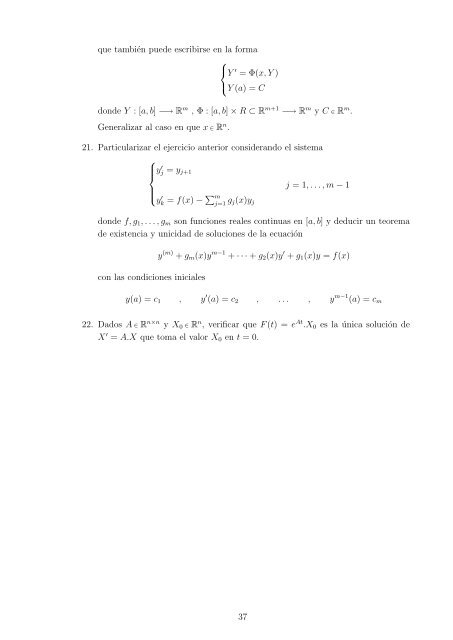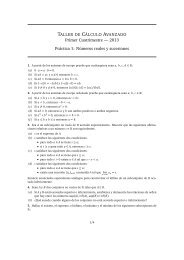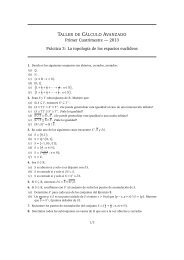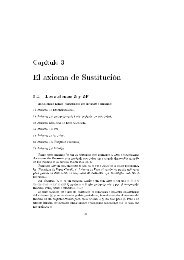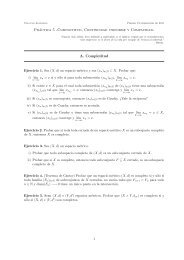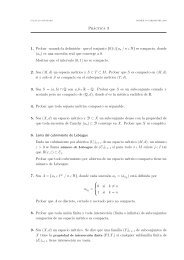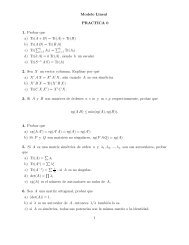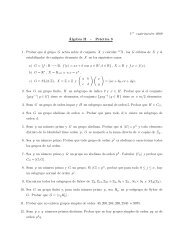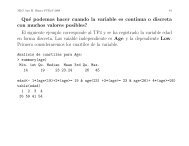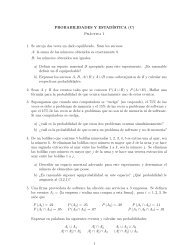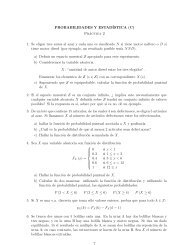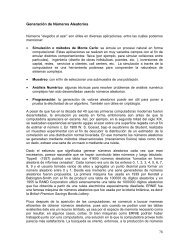Práctica 7 1. a) Sea f : (a, b) −→ R derivable. Probar que f es ...
Práctica 7 1. a) Sea f : (a, b) −→ R derivable. Probar que f es ...
Práctica 7 1. a) Sea f : (a, b) −→ R derivable. Probar que f es ...
You also want an ePaper? Increase the reach of your titles
YUMPU automatically turns print PDFs into web optimized ePapers that Google loves.
<strong>que</strong> también puede <strong>es</strong>cribirse en la forma<br />
⎧<br />
⎨Y<br />
⎩<br />
′ = Φ(x, Y )<br />
Y (a) = C<br />
donde Y : [a, b] <strong>−→</strong> R m , Φ : [a, b] × R ⊂ R m+1 <strong>−→</strong> R m y C ∈ R m .<br />
Generalizar al caso en <strong>que</strong> x ∈ R n .<br />
2<strong>1.</strong> Particularizar el ejercicio anterior considerando el sistema<br />
⎧<br />
⎪⎨<br />
y<br />
⎪⎩<br />
′ j = yj+1<br />
j = 1, . . . , m − 1<br />
y ′ k = f(x) − m<br />
j=1 gj(x)yj<br />
donde f, g1, . . . , gm son funcion<strong>es</strong> real<strong>es</strong> continuas en [a, b] y deducir un teorema<br />
de existencia y unicidad de solucion<strong>es</strong> de la ecuación<br />
con las condicion<strong>es</strong> inicial<strong>es</strong><br />
y (m) + gm(x)y m−1 + · · · + g2(x)y ′ + g1(x)y = f(x)<br />
y(a) = c1 , y ′ (a) = c2 , . . . , y m−1 (a) = cm<br />
22. Dados A ∈ R n×n y X0 ∈ R n , verificar <strong>que</strong> F (t) = e At .X0 <strong>es</strong> la única solución de<br />
X ′ = A.X <strong>que</strong> toma el valor X0 en t = 0.<br />
37


